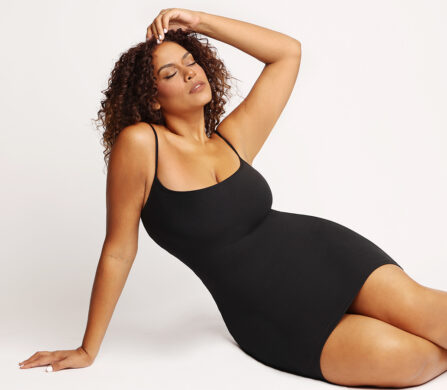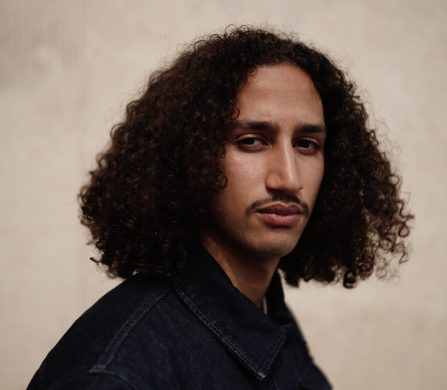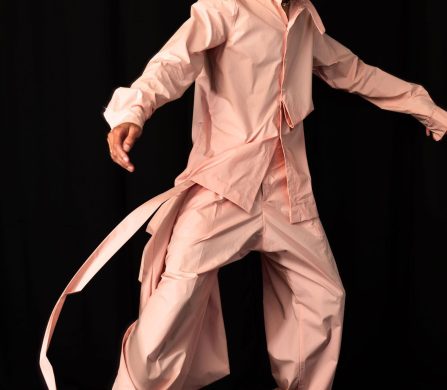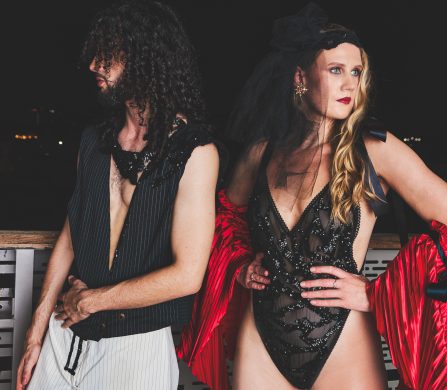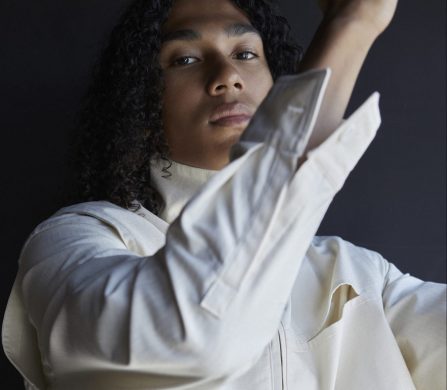Invoking the texture and colour of natural earth, menswear designer Martin Bady makes grand pieces imbued with terrestriality. His artisanal brand Safre launched earlier this year with the goal of bringing uniqueness to the male wardrobe, utilising ethically-sourced fabrics and yarns to craft not only clothes, but living, breathing works; every piece designed under the Safre label is meant to age, showing signs of wear in a way similar to the earth itself.
Bady’s fascination with the ageing process stems from his history both in the fashion world and as an archivist. Regarding fashion, he trained at the l’Institut Français de la Mode and l’Atelier Chardon Savard in Paris, which spawned an interest in the development of handmade materials. As an archivist, scars of age serve as a constant source of captivation for Bady; he’s an admitted collector, amassing an accumulation of garments, objects and books that goes back many years. Age provides a unique insight into every object; “The time passing enhances its initial potential,” says Bady, “and its survival until today proves it even more.” Here, Schön! speaks exclusively to Bady about Safre, his new atelier and the accompanying photoshoot.
When did you begin designing textiles?
While designing my first collection for men in 2014, I imagined a theme about collapsed empires. Back then I was already amazed by surfaces aged by time, about material acting as a witness, and I was trying to translate that into textile. I developed textiles based on ancient craftsmanship meant to age, perceiving the inevitable wear and tear as an enhancement.
Why did you settle on the name “Safre” for your work?
Safre is a French word; it is a given name about a material composing the soil in a specific area in the south of France called La Provence. It shows infinite asperities and a subtle earthy colour range. Due to its ability to shift from a brittle state to an unbreakable one, over time, a lot of people carved it, creating a surprising osmosis between art form and nature.
Tell us about the development about your new atelier dedicated to natural dyeing. How does natural dyeing relate to the ideology behind Safre?
We renovated a place unused for years about to collapse. It was a long and intense journey, an initiatic path following a natural process, which teaches us the quality of time sustained by the handmade. The versatility of nature to provide colours is endless, and the element of surprise is extremely exciting. It turns you into an alchemist that has to navigate between a dense history of practice coming from ancient times; it transcends your vision of life by acting on its cycle. Taking care of plants, growing them, finding the right way to extract the colour and then translating it into the fibres is a fantastic process.
The natural dyeing becomes central to Safre, which defends the use of ethical material, craftsmanship and uniqueness. It infuses life into the garment, and because a lot of unpredictable parameters are involved while dyeing, it is by essence impossible to dye the exact same shade two times. I found it vital. It is the best way to offer unique pieces.
How does the idea of virility play into this collection?
The symbolism of virility over civilisation shifted from opposition to opposition. It was important to embody the collection through charismatic models to expose this perception; a muted force, a carved impressive face layered with a graceful inner peace inherited from hundreds of lives lived before us. The wardrobe highlights this feeling by playing with proportions: wide shoulders, short chest, high waist confronting a wide fluid bottom.
Your work is very texture-rich. When designing a new garment, is the texture a priority from the beginning or a later development?
These are two isolated processes which collide at some point and allow me to create unique garments.
You’re also an archivist. How does that experience impact your work?
Inspiration, inspiration of shape, of texture, of feeling, embodied by a witness of another time.
It pushes me to think about how to create durable attire able to live through time, and how its usage may become a mirror of it.
What emotions were you looking to capture in this photoshoot by Thomas Daeffler, and how did you direct Daeffler to capture them?
I wanted to reveal the atmosphere of a Film Noir, where tension, darkness and sensitivity cohabitate. It was exceptional having Hervé and Nicolas to manifest those emotions and act with spontaneity. We had the chance to shoot at le Mobilier National, a three-century-old institution. The spirit of this place participates as well to intensify the atmosphere.
Thomas is a friend, and he knows my work as he knows myself: quite well. This intimacy brought a certain honesty in the final result and a very smooth way of working together.
You said that Safre clothes are “made to age”. What does that mean to you?
We are ageing, which does not mean we have to be replaced. We wear garments, and for me, it is natural to be followed by them in this process. What if the desire of constant renewal was now nourished by an attire echoing usage and lives? Safre tends to offer this differentiation through the uniqueness of craftsmanship applied.
What do you aim to do with Safre in the future?
To find an echo among people.
Follow Safre on Instagram.
photography. Thomas Daeffler
models. Nicolas Corazzari + Hervé Cousin
hair + make up. Margaux Jalouzot + Sun
chief operator. Thomas Woods
location. Le Mobilier National



















